Styled by Ghia of Turin and built by Karmann with VW running gear, it’s no wonder the Karmann Ghia ended up becoming one of the coolest looking, cult air-cooled coupes of all time. With something this lovely looking, it didn’t seem to matter that it was barely able to pull the skin off a rice pudding and most quickly succumbed to rust… So how do you go about buying a nice KG and rooting out the diamonds from the dogs? Read on to find out…
The objective initially was to produce a car that had the looks of a true sports car, yet could provide reliable and affordable motoring in typical VW tradition. The first coupes appeared for the 1956 model year, based on the underpinnings of the Beetle with the same flaccid 1192cc engine – quickly dismissing any supercar pretensions. Not that it ever had any. These early models were known as the ‘lowlight’ due to the smaller front grilles each side of the nose and lower, more rounded front wings (see below).
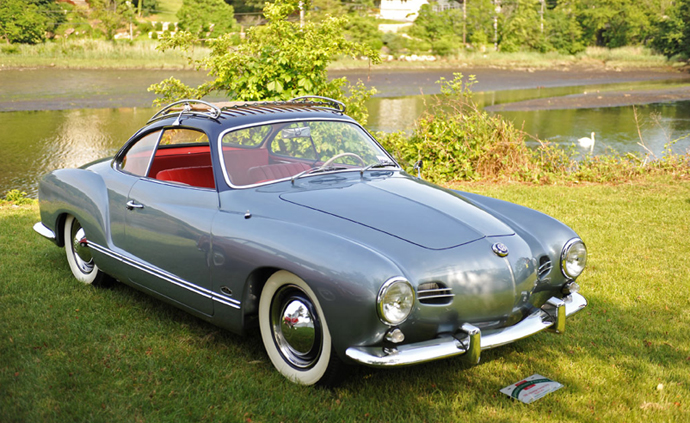
An equally stylish convertible joined the line-up in 1958. In 1960 the cars received a minor facelift with bigger front air intakes and 2in higher wings and it was at this time that the first right-hand drive versions were introduced. In 1961 the old engine was ditched in favour of the new 34bhp unit mated to an all-synchromesh gearbox. By 1966, engine size had crept up to 1285cc, and a year later, it got the 1500cc unit along with dual circuit brakes and front discs.
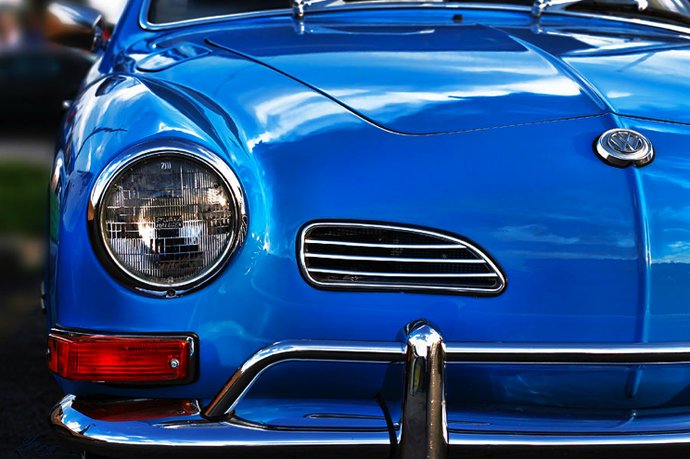
A semi-auto arrived in 1968 and in 1971 it received the 1600cc lump, although it didn’t offer much more in the way of performance and generally wasn’t as reliable as the much loved 1500. Around about this time the more delicate chrome bumpers were replaced with the less elegant Europa style affairs. Production finally ended in 1974 after a total production, including convertibles, of 444,300.
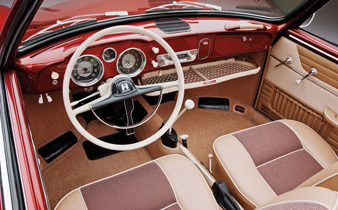
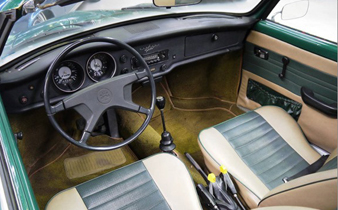
What to look for?
Rust will be the biggest KG killer. The dreaded tin worm seems particularly partial to the Karmann’s metalwork – and it can and will rust just about anywhere and everywhere. When inspecting a car for sale, therefore, assessing the condition of the bodywork will be your main objective so don’t become distracted or misty eyed! Look for the more obvious stuff first, like rust around the headlamps, in the nose, the wheelarches, quarter panels and door bottoms. Get underneath and take a closer look at the sills, jacking points and the Karmann Ghia floorpan. Then go on to check the front and rear inner wings and bumper mounts before moving inside to check the heater channels.
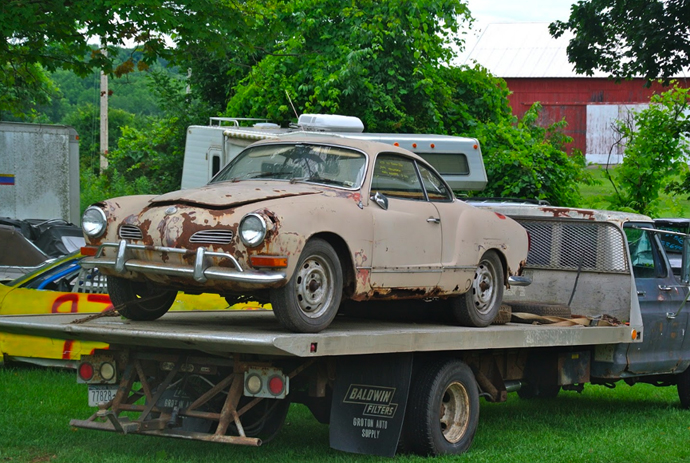
It’s pretty likely that, unless it’s a relatively rust free Californian import, some work will have been done already on the body. Beware of bodges though as covering rust with a layer of thick filler really isn’t the way to go and sorting out someone else’s mess always takes longer than cutting out original rusty metal. Trust us, because we’ve had to do it…
We stock a variety of Karmann Ghia body repair sections, including part of that difficult to shape properly nose cone, so there’s no reason to not take on a project – as long as you’re prepared to do the work yourself to make the whole thing viable. Panels for early lowlight cars, however, are decidedly more tricky.
Bare in mind that floorpans on convertibles are likely to be more rusty, simply because the hood or hood rubbers have probably let in water at some point, so inspect topless cars more carefully.
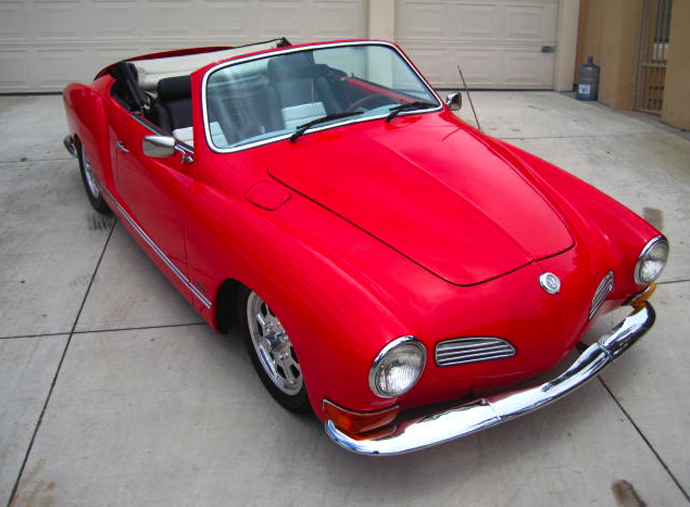
Running gear
Mechanically the Ghia is the same as a Beetle, and any problems will probably pale into insignificance compared to some of the nightmares that might be involved sorting the bodywork. To be honest then there’s really little to worry about because all the parts are readily available and inexpensive. With engines, as always, check for end float by tugging the fanbelt pulley and beware of too much blue smoke which points to worn valve guides. Interiors are typically tough, though beware of missing trim – especially on early models – as getting hold of stuff is become more of a challenge.
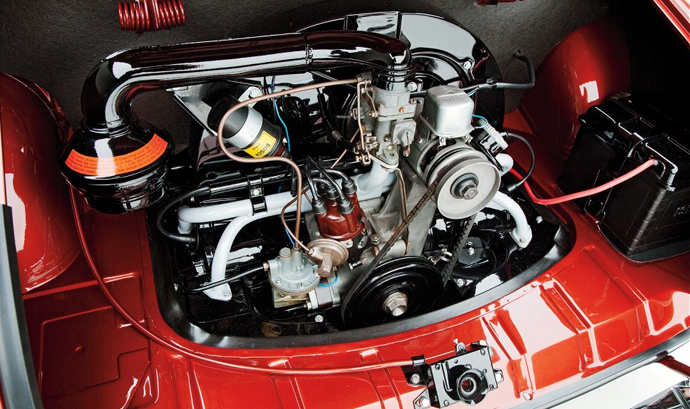
Also, regarding imports – not all cars are as they seem, so don’t take as read the fact that a US car will be free from rust as some parts of America are actually wetter than here! Yes, really.
Originality is always nice, and will help protect your investment – so try and avoid any that have been butchered or modified by having older style bumpers grafted on, the wrong engines or aftermarket interiors thrown in.
What to pay
With the air-cooled spotlight still firmly focused on Splitties and Bays, the Karmann Ghia has yet to realise its full potential price-wise, which means you could still find a bargain. Especially if you don’t mind a big-bumper model. You should be able to get a half-reasonable early 1600 for around £8,000-£10,000, with ‘projects’ usually fetching somewhere in the region of £5,000 (although we did see one on Auto Trader that had been sat in a field for £3,950). The lowlight (pre-’59) models will be the most sought after and you could easily pay in excess of £25,000 for one of these without rust. A more feasible totally classic looking alternative would be an early 1960s 1200 – although their rarity value has an impact on prices. In our opinion the one to have is the 1500. Slim bumpers, a strong, reliable engine and the added advantage of discs at the front. If you’re lucky you’ll find a really nice one of these for under £15,000. Convertibles usually make up to £2k more than the coupe.
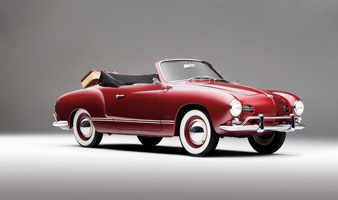
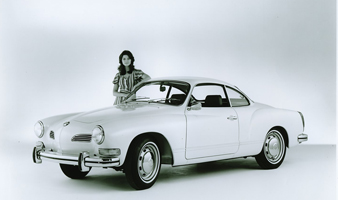
Verdict
Find a nice, honest Type 1 KG and it will forever woo you with its elegant, totally classic looks, simple mechanicals and inexpensive running costs. A body free from rust is key, although there’s now enough expertise and repair panels available to make a good fist of a project. Just ensure it’s complete when you buy it. Sixties cars had more character, but later ones are perhaps more suited to regular use. Either way, add a generous dose of period accessories and enjoy making a Ghia look even cooler… if that’s possible.
Happy hunting…
Ian
The opinions expressed here are the personal opinions of the author and do not necessarily represent the views and opinions of VW Heritage


My favourite Ghia has to be the one that belonged to good friend and Cabrio Club member Hans Hungs, with his subtlety modified cabrio fitted with a 2.6 lt Type IV engine and 5 speed gearbox. I’ll never forget that blast down the Autobahn!